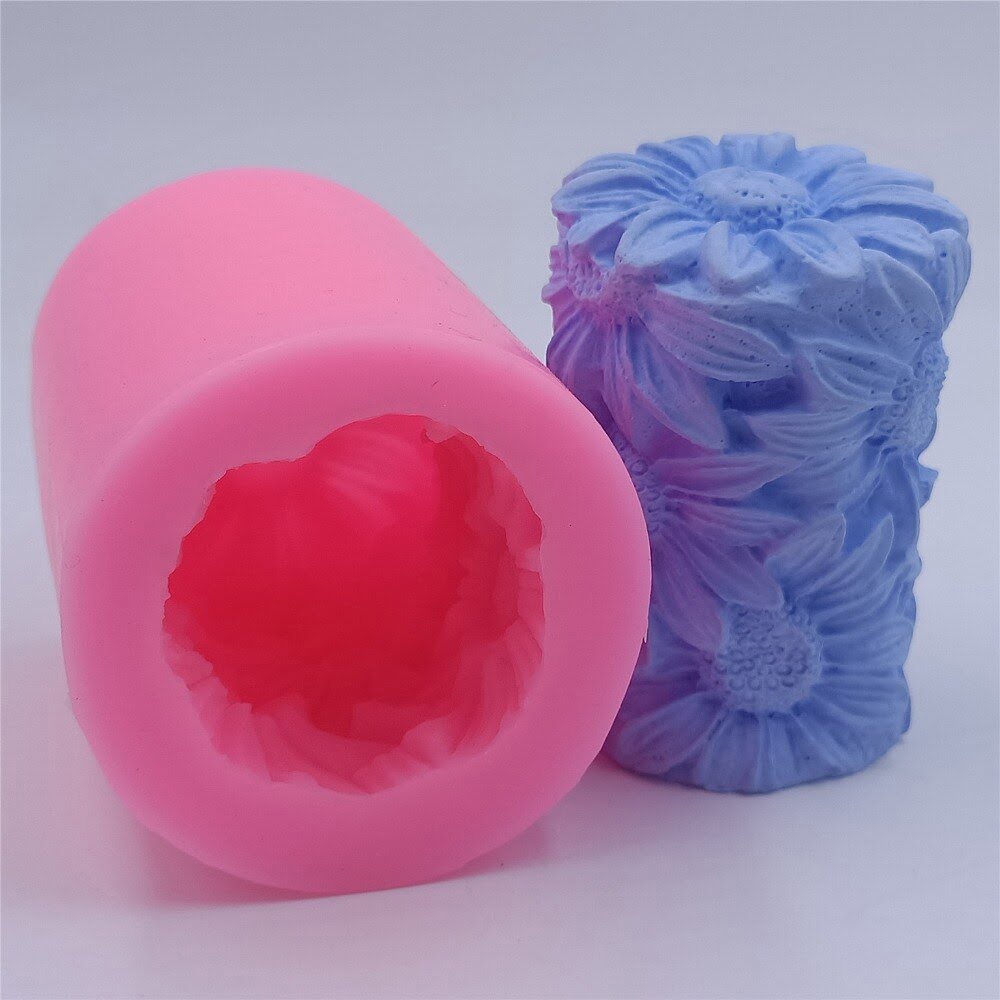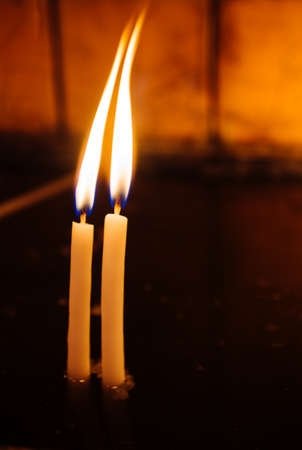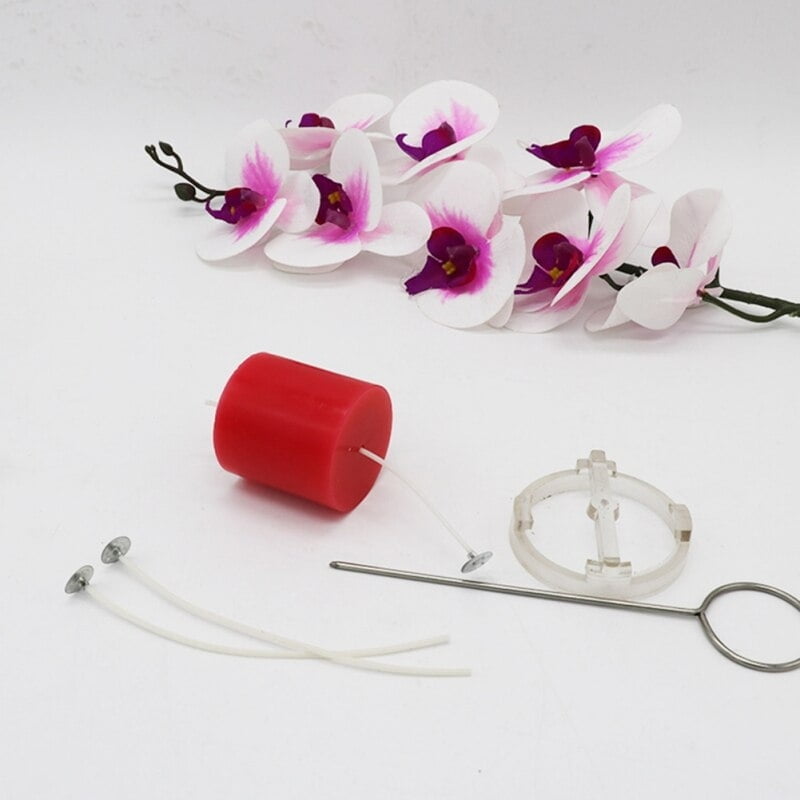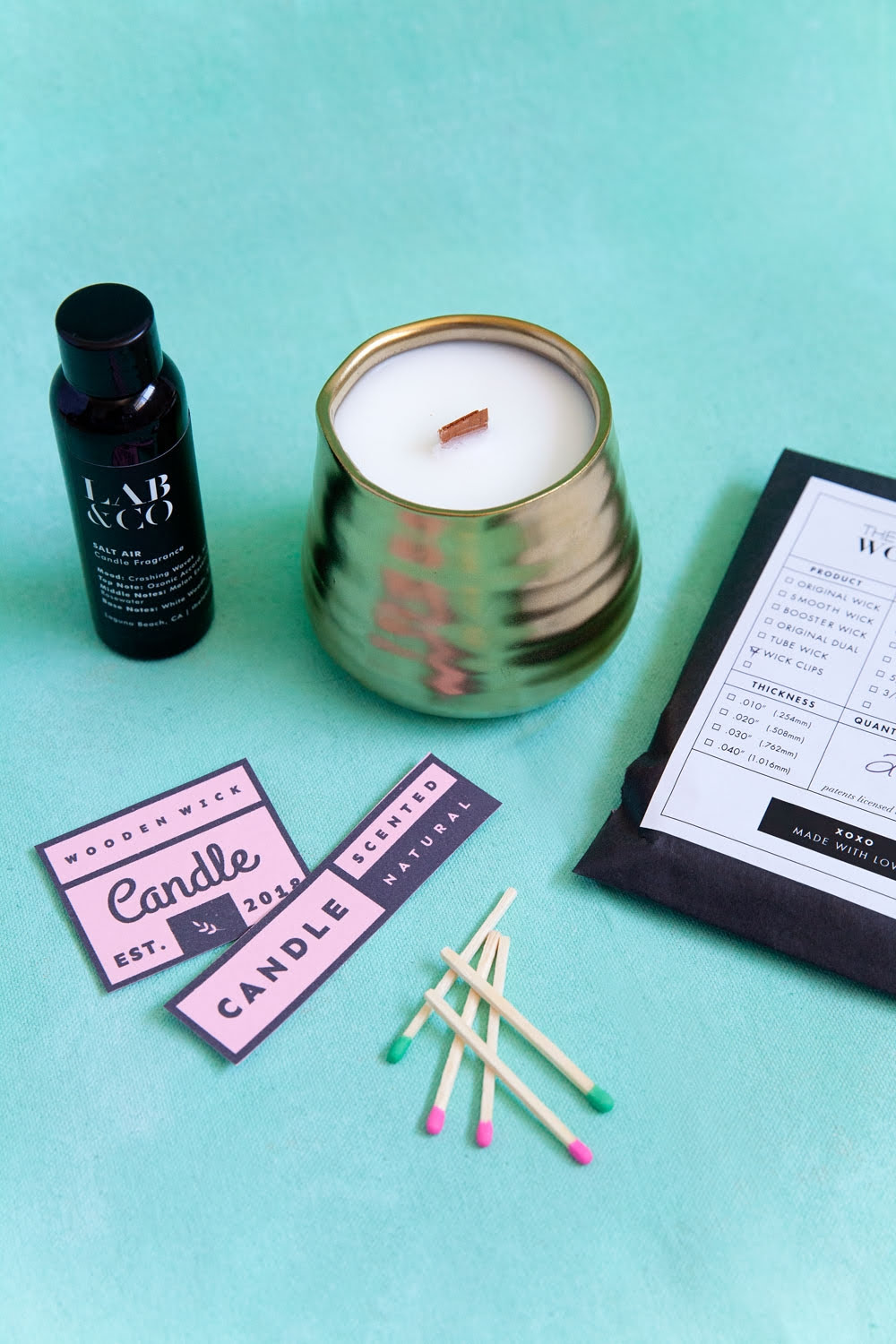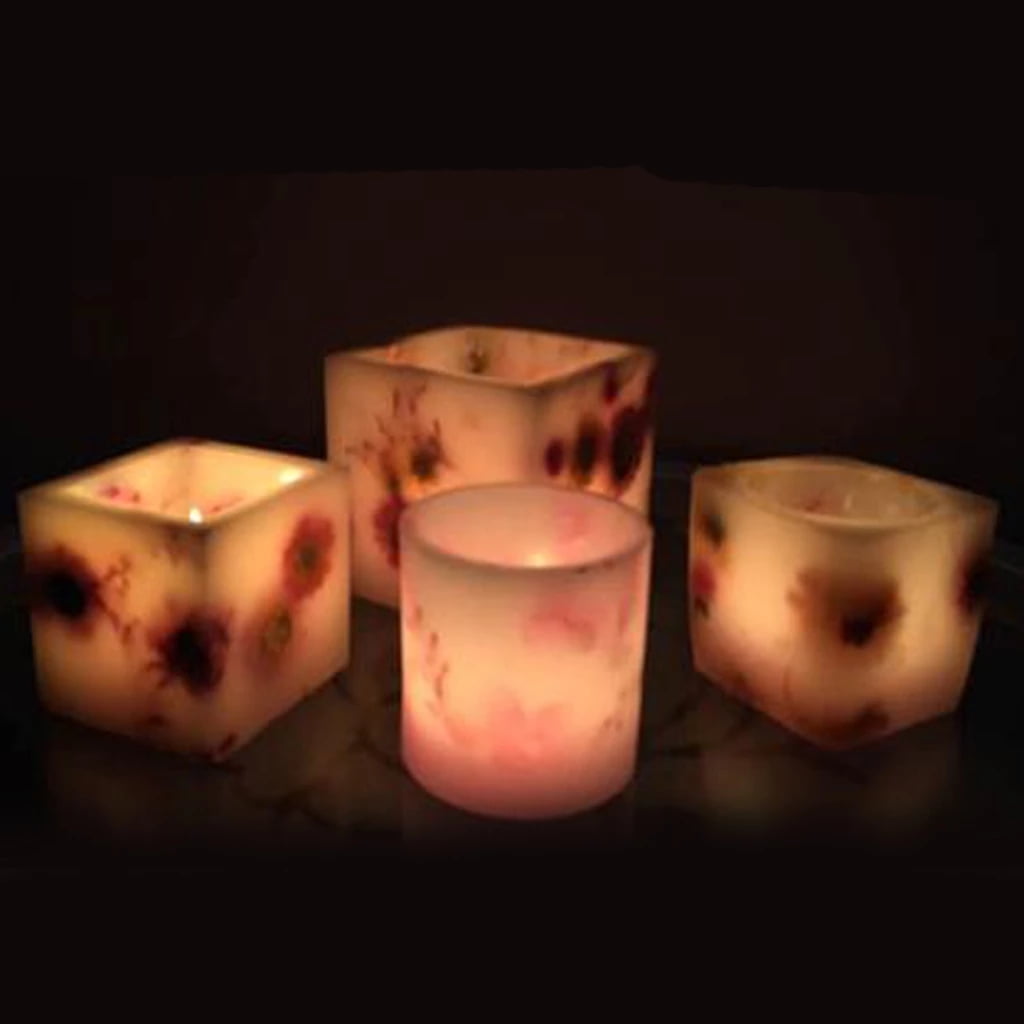When it comes to candle making, proper wax storage is of utmost importance. Whether you are a beginner or an experienced candle maker, understanding how to store wax correctly can greatly impact the quality and success of your projects. Wax is the primary ingredient in candles, providing both structure and fuel for the flame. Improper storage can lead to changes in texture, color, and scent, ultimately affecting the overall performance of your candles.
The key reason for storing wax properly is to maintain its original qualities and prevent any unwanted changes. Wax has a tendency to absorb odors from its surroundings, which can alter the fragrance of your candles. Additionally, exposure to high temperatures or fluctuations in temperature can cause the wax to melt or become brittle. This can result in uneven burning or difficulty in mixing with other ingredients.
Different types of wax require different storage methods as they have varying melting points and sensitivities. It is essential to understand these differences in order to select the appropriate storage conditions. By following proper storage practices, you can preserve the integrity of your wax, ensuring that it remains suitable for use in candle making projects.
In the following sections, we will delve into a more detailed understanding of various types of waxes used in candle making and how to choose the right one. We will also provide tips on preparing your wax for storage and share valuable techniques for extending its shelf life.
Furthermore, we will guide you through a step-by-step process on how to store wax effectively and highlight common mistakes that should be avoided at all costs. Finally, we will address frequently asked questions about wax storage so that you have all the knowledge needed to maintain the quality of your wax for exceptional candle making results.
Understanding the Different Types of Wax for Candle Making
When it comes to candle making, understanding the different types of wax is crucial in achieving desired results. The choice of wax can greatly affect the appearance, fragrance, burn time, and overall quality of your candles. In this section, we will explore the various types of wax commonly used in candle making.
Paraffin Wax
Paraffin wax is one of the most popular and widely used waxes for candle making. It is derived from petroleum and is known for its low cost and ease of use. Paraffin wax has a high melting point, which makes it ideal for creating pillar candles that need to hold their shape. It also has a good scent throw and can hold fragrances well.
Soy Wax
Soy wax is a natural alternative to paraffin wax and appeals to those seeking an eco-friendly option. Made from soybean oil, soy wax burns cleaner than paraffin and produces less soot. It has a lower melting point than paraffin, which means it may not be suitable for all types of candles. However, soy wax has excellent scent throw and provides a smooth finish to candles.
Beeswax
Beeswax is another natural choice for candle making that offers unique benefits. It is made by bees in the hive and possesses a naturally sweet aroma without the need for added fragrance oils. Beeswax burns longer than other waxes due to its higher melting point, making it perfect for long-lasting candles such as taper or pillar candles. However, it can be more expensive compared to other waxes.
Palm Wax
Palm wax is a sustainable option derived from palm tree oil. It produces a beautiful crystalline effect on finished candles and has an excellent scent throw capability. Palm wax also burns cleanly without emitting harmful chemicals into the air. This type of wax is often used for container candles and can be mixed with other waxes for different effects.
Gel Wax
Gel wax is a unique type of wax that provides a translucent and jelly-like appearance when solidified. It has a high fragrance retention, making it perfect for creating highly scented decorative candles. Gel wax is not recommended for container candles but works well for embedding objects like seashells or beads in the candle design.
Understanding the characteristics and advantages of each wax type allows you to make an informed decision based on your specific candle making project. Experimenting with different types of waxes can also lead to exciting discoveries and create unique candles that stand out from the rest.
Choosing the Right Wax for Your Candle Making Project
When it comes to candle making, choosing the right wax is essential for achieving the desired results. There are various types of wax available in the market, each with its own unique characteristics and benefits. Understanding the different types of wax will help you select the one that best suits your candle making project.
One popular type of wax used in candle making is paraffin wax. This type of wax is derived from petroleum and is known for its affordability and ease of use. Paraffin wax has a low melting point, which makes it ideal for beginners or those who are looking to make candles quickly.
Another option is soy wax, which is made from soybean oil. Soy wax is known for its clean burn and eco-friendly properties. It also has a lower melting point compared to paraffin wax, which means that it requires less heat to melt and can be easier to work with.
Beeswax is another popular choice among candle makers. It is a natural wax produced by bees and has a pleasant honey-like scent. Beeswax candles have a longer burn time and emit less soot compared to other types of candles. However, beeswax can be more expensive than other waxes.
| Wax Type | Key Attributes |
|---|---|
| Paraffin Wax | Affordable, easy to use, low melting point |
| Soy Wax | Clean burn, eco-friendly, lower melting point than paraffin wax |
| Beeswax | Natural, pleasant scent, longer burn time |
Before making a decision, consider factors such as cost, burning characteristics, and personal preferences. It’s also important to consider any allergies or sensitivities that you or your customers may have.
By understanding the different types of wax available for candle making and their unique qualities, you can make an informed choice that will lead to exceptional candle making results.
Preparing Your Wax for Storage
Properly preparing your wax for storage is an essential step in maintaining its quality for future candle making projects. Cleaning and filtering the wax before storing it helps remove any impurities or debris that could affect the outcome of your candles. Here are some important steps to follow when preparing your wax for storage:
Cleaning Your Wax
Before storing your wax, it is crucial to clean it thoroughly to remove any dust, dirt, or foreign particles that may have accumulated. Start by breaking up larger chunks into smaller pieces using a clean knife or grater. Place the wax pieces into a heat-resistant container and melt them using a double boiler method or a slow cooker set on low heat.
As the wax melts, any impurities will rise to the surface. Skim off these impurities carefully using a strainer or cheesecloth.
Filtering Your Wax
Filtering your melted wax ensures that any remaining impurities are removed before storage. After removing the melted wax from heat, allow it to cool slightly but not solidify completely. Line a funnel with several layers of cheesecloth or a fine-mesh filter and place it over your storage container. Slowly pour the melted wax through the funnel, allowing it to filter out any remaining debris or particles.
Allowing Your Wax to Solidify
Once you have filtered your wax, allow it to solidify completely at room temperature before sealing and storing it. This process can take several hours, depending on the type and amount of wax you are working with. Ensure that the container used for storing the solidified wax is clean and dry.
By following these steps to clean and filter your wax before storage, you can prolong its shelf life and ensure that it remains in optimal condition for future candle making projects.
Tips and Tricks for Extending the Shelf Life of Your Wax
Properly storing your wax is crucial for ensuring its quality and longevity. By following these tips and tricks, you can extend the shelf life of your wax and have it ready for your candle making projects whenever you need it.
- Temperature Control: Wax is sensitive to temperature changes, so it’s important to store it in a cool, dry place. Ideally, the temperature should be between 60 to 85 degrees Fahrenheit (15 to 30 degrees Celsius). Avoid exposing the wax to extreme heat or cold, as this can cause it to melt or solidify unevenly, affecting its texture and performance in your candles.
- Air Tight Containers: To prevent moisture from seeping into your wax, store it in air-tight containers. Airtight bags or plastic containers with seals are ideal for keeping the wax free from moisture and contaminants. Make sure the containers are thoroughly cleaned and dry before transferring the wax into them.
- UV Protection: Exposure to sunlight and UV rays can degrade the quality of your wax over time. To protect it from UV damage, store your wax in opaque or tinted containers that provide sufficient protection against light. This will help maintain the color and consistency of your wax for longer periods.
| Tips | Tricks |
|---|---|
| Temperature Control | Store in a cool, dry place (60-85°F) |
| Air Tight Containers | Use sealed plastic containers or bags |
| UV Protection | Store in opaque or tinted containers |
By following these tips and tricks, you can ensure that your wax remains in optimal condition for your candle making projects. With proper storage, you’ll be able to create exceptional candles every time, without worrying about the quality of your wax.
How to Store Wax for Candle Making
Proper storage of wax is crucial for maintaining its quality and ensuring exceptional results in candle making. Here is a step-by-step guide on how to store wax effectively:
Step 1: Clean and Prepare Your Wax Storage Area
Before storing your wax, make sure the area where you plan to keep it is clean and free of dust or debris. This will prevent any contaminants from getting into the wax and affecting its quality. Wipe down shelves or containers with a damp cloth and consider using storage bins or containers with lids to protect the wax from dust.
Step 2: Keep Temperature and Humidity in Check
Temperature and humidity are two important factors that can affect the shelf life of wax. Ideally, you should store your wax in a cool, dry place away from direct sunlight and extreme temperature changes. High temperatures can cause melting or softening of the wax, while humidity can lead to condensation and moisture buildup, which can ruin the texture of the wax.
Step 3: Use Airtight Containers
To prevent air exposure, which can lead to oxidation and deterioration of your wax, it is recommended to use airtight containers for storage. You can either use plastic or glass containers with tight-sealing lids. Ensure that the container is completely dry before transferring your wax into it to avoid moisture contamination.
Step 4: Label Your Wax Containers
Labeling your wax containers is essential for organization and easy identification. Include details such as the type of wax, date purchased or received, and any other relevant information pertaining to that specific batch of wax. This will help you keep track of the age and quality of each batch so that you can prioritize using older batches first.
By following this step-by-step guide on how to store wax for candle making properly, you can maintain the quality of your materials and ensure exceptional candle making results every time. Proper storage not only extends the shelf life but also preserves all the desirable characteristics of the wax, such as fragrance retention and smooth texture. Remember to always store your wax in a cool, dry place, use airtight containers, and label them for easy organization.
Common Mistakes to Avoid When Storing Wax for Candle Making
Storing wax properly is essential for maintaining the quality and longevity of your candle making supplies. To avoid common mistakes that can affect the performance of your wax, it’s important to be aware of potential pitfalls. Here are some common mistakes to avoid when storing wax for candle making:
- Exposing wax to direct sunlight: One common mistake is storing wax in an area where it is exposed to direct sunlight. Sunlight can cause the wax to melt or change its consistency, which can make it difficult to work with when making candles. It’s best to store your wax in a cool, dark place away from any sources of heat or sunlight.
- Improperly sealing containers: Another mistake is not sealing containers properly. If air can enter the container, it may cause the wax to oxidize and become discolored or develop a rancid smell over time. Make sure that you use airtight containers or packaging materials specifically designed for candle making to ensure that your wax stays fresh.
- Storing different types of wax together: Mixing different types of wax together during storage is another mistake that should be avoided. Different types of waxes have different melting points and characteristics, so they may react differently when stored together. This can affect the quality and performance of your candles when you eventually use the mixed waxes.
To summarize, avoiding these common mistakes when storing wax for candle making will help maintain its quality and ensure exceptional results in your candle making projects. By storing your wax in a cool, dark place, sealing containers properly, and keeping different types of waxes separate, you can extend the shelf life of your wax and enjoy consistent performance in your candles.
Frequently Asked Questions about Wax Storage in Candle Making
How long can I store wax for candle making?
The shelf life of wax for candle making depends on various factors such as the type of wax used and the storage conditions. Generally, soy wax and beeswax have a longer shelf life compared to paraffin wax. Soy wax can be stored for up to two years, while beeswax can last even longer.
To ensure that your wax remains in optimal condition, it is important to store it in a cool, dry place away from direct sunlight and extreme temperatures. Avoid storing your wax near windows or where it may be exposed to moisture or heat sources.
Can I store different types of waxes together?
It is generally recommended to store different types of waxes separately to prevent them from mixing and affecting each other’s quality. Each type of wax has its own melting point and characteristics, so combining them may lead to inconsistent results in your candle making projects.
If you need to store multiple types of wax, consider using separate containers or bags that are clearly labeled. This will help you keep track of the different waxes and maintain their quality over time.
Is it necessary to filter my wax before storage?
Filtering your wax before storage is an essential step in ensuring its quality over time. When candles are burned, they release impurities like dust, debris, and burnt wick fragments into the melted pool of wax. If these impurities are not removed before storing the leftover wax, they can affect the quality of any future candles made with it.
To filter your melted wax, you can use a cheesecloth or fine mesh strainer placed over a container or directly into the storage container. This will help remove any debris or particles present in the liquid wax. Ensure that the filtered wax is completely cooled before storing it to prevent condensation or moisture from contaminating the wax.
Can I reuse leftover wax for candle making?
Yes, leftover wax from burned candles can be reused for future candle making projects. However, it is important to assess the quality of the leftover wax before using it again. If the wax has any discoloration, a strong scent, or contains a high amount of impurities, it may not be suitable for reuse.
Prior to reusing leftover wax, ensure that it is properly filtered and cleaned to remove any impurities. You can melt the leftover wax, filter it as mentioned earlier, and pour it into storage containers for future use. Remember to label each container with the type of wax and its date of storage for easy reference.
Are there any special considerations for storing colored or scented waxes?
If you are storing colored or scented waxes, it is important to keep them in airtight containers away from direct sunlight and extreme temperatures. Exposure to light and heat can cause the color and scent to degrade over time.
Avoid mixing different colors or scents together during storage as this may result in undesired blending or fading. It is recommended to store each colored or scented wax separately in clearly labeled containers to maintain their individual qualities.
Conclusion
In conclusion, proper wax storage is crucial for achieving exceptional candle making results. By understanding the different types of wax and choosing the right one for your project, you can ensure that your candles will burn beautifully and consistently. Preparing your wax for storage by cleaning and filtering it will help remove any impurities that could affect the quality of your finished candles.
To extend the shelf life of your wax, there are a few tips and tricks you can follow. Keeping it sealed in airtight containers or bags, away from heat and light, will prevent any moisture or heat from causing damage to the wax. Additionally, rotating your stock regularly and using older wax first will ensure that you are always working with the freshest supplies.
When storing your wax, it’s important to avoid common mistakes that could compromise its quality. This includes keeping it away from strong odors, as wax has a tendency to absorb smells. It’s also essential to avoid fluctuating temperatures, as this can cause the wax to expand and contract, affecting its texture.
By following these guidelines and frequently asked questions about wax storage in candle making, you can maintain the quality of your wax and achieve exceptional candle making results every time. Remember that proper storage practices not only preserve the integrity of your supplies but also contribute to the safety and efficacy of your final products.
With meticulous attention to detail in storing and maintaining your wax, you’ll be able to create beautiful candles that bring warmth and ambiance into any space.
Frequently Asked Questions
How should candle wax be stored?
Candle wax should be stored in a cool and dry place to maintain its quality and longevity. It is important to keep it away from direct sunlight and heat sources, as exposure to high temperatures can cause the wax to melt or change consistency.
Storing candle wax in an airtight container, such as a sealed bag or a plastic bin with a tight-fitting lid, helps to prevent any moisture or dust from contaminating the wax. By storing it properly, you can ensure that your candle wax remains in good condition for future use.
Where do you store leftover wax?
Leftover wax can be stored in various ways depending on its form and quantity. If you have small amounts of unused melted wax, you can pour it into small molds or ice cube trays to create new wax melts that can be easily used later on. These can then be stored in airtight containers.
For larger quantities of leftover solid candles, consider using empty candle jars or containers specifically designed for storing wax. Alternatively, you may also choose to wrap solid wax in parchment paper or aluminum foil before placing it in a cool and dry location until needed again.
How long can you keep candle wax?
The shelf life of candle wax is generally quite long if stored properly. Wax that has not been used typically has an indefinite shelf life under suitable conditions. However, over time, the quality of the wax might degrade due to changes in color, texture, or fragrance potency.
It’s recommended to use well-preserved candle wax within one to two years for optimal results. Checking for any signs of mold growth or unusual smells is important before using older stored wax; when in doubt, it is better to dispose of it and start fresh with new supplies for your candle-making projects.

Welcome to my candle making blog! In this blog, I will be sharing my tips and tricks for making candles. I will also be sharing some of my favorite recipes.

